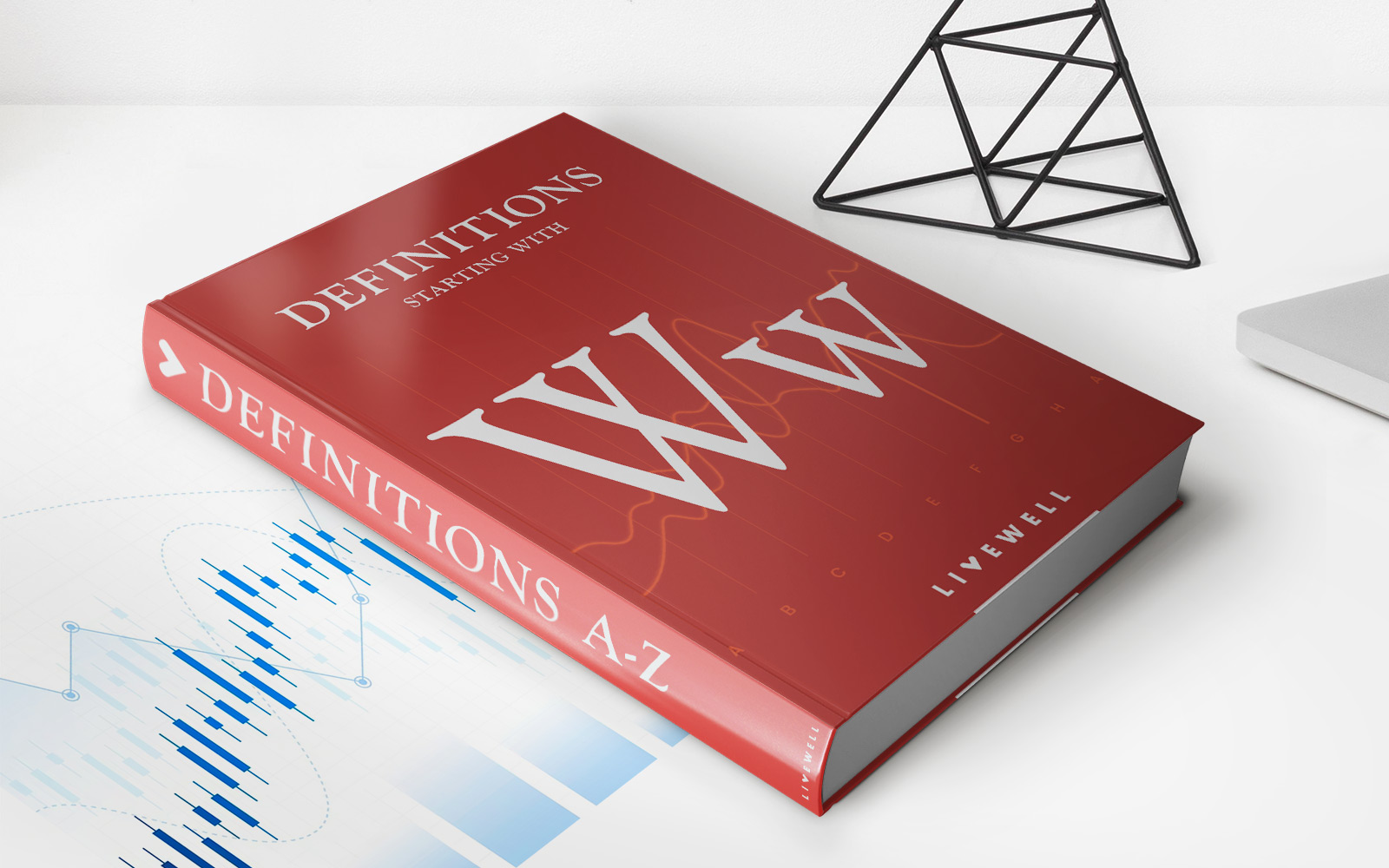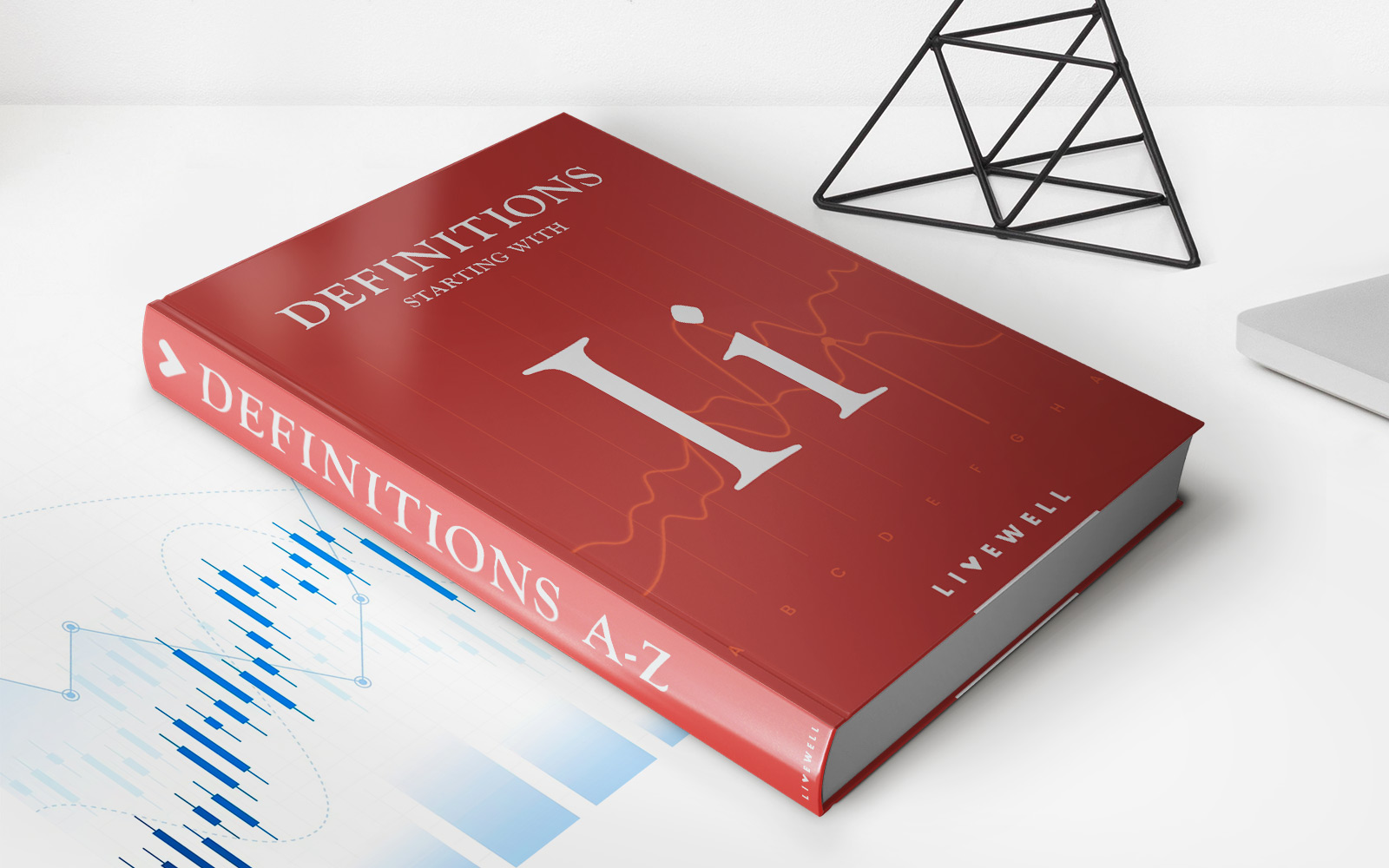

Finance
What Is The Importance Of Retirement Planning?
Published: January 21, 2024
Discover the significance of retirement planning and how it plays a vital role in your financial future. Learn how finance and retirement intertwine for a secure and fulfilling life.
(Many of the links in this article redirect to a specific reviewed product. Your purchase of these products through affiliate links helps to generate commission for LiveWell, at no extra cost. Learn more)
Table of Contents
- Introduction
- Definition of Retirement Planning
- Financial Security in Retirement
- Maintaining Lifestyle in Retirement
- Dealing with Inflation and Rising Costs
- Healthcare and Medical Expenses
- Legacy and Estate Planning
- Retirement Income Sources
- Social Security Benefits
- Employer-Sponsored Retirement Plans
- Individual Retirement Accounts (IRAs)
- Importance of Starting Early
- The Power of Compound Interest
- Tax Benefits of Retirement Planning
- Minimizing Dependence on Others
- Peace of Mind and Reduced Stress
- Adaptability to Life Changes
- Enjoying Hobbies and Pursuits
- Conclusion
Introduction
Retirement planning is a crucial aspect of personal finance that often gets overshadowed by more immediate financial responsibilities. However, taking the time to plan for retirement can greatly impact your financial well-being and overall quality of life in your golden years.
Retirement planning involves creating a roadmap for your future, ensuring that you have enough money to live comfortably once you retire. It is about making informed decisions regarding savings, investments, and income sources to achieve financial security in your post-work years.
Without proper retirement planning, individuals may find themselves struggling to maintain their desired standard of living, facing financial instability, and relying heavily on others for support. On the other hand, those who have diligently planned for retirement experience the peace of mind that comes with financial independence, the ability to pursue their passions, and a worry-free retirement.
In this article, we will explore the importance of retirement planning and how it can set the stage for a financially secure and fulfilling future.
Definition of Retirement Planning
Retirement planning is the process of determining your financial goals for retirement and creating a strategy to achieve them. It involves assessing your current financial situation, estimating future expenses, and developing a plan to save and invest in order to accumulate the necessary funds for retirement.
Retirement planning takes into account several factors, such as your desired lifestyle in retirement, your anticipated length of retirement, and inflationary pressures that can erode the purchasing power of your savings over time.
One of the key components of retirement planning is estimating how much money you will need to cover your expenses during retirement. This involves considering factors such as housing costs, healthcare expenses, travel, hobbies, and daily living expenses.
Retirement planning also includes identifying the different sources of income that you will have during retirement. This can include Social Security benefits, employer-sponsored retirement plans, individual retirement accounts (IRAs), and any other investments or savings you have accumulated.
It is important to note that retirement planning is not a one-time event, but an ongoing process. As your circumstances change, such as changes in income, expenses, or retirement goals, your retirement plan may need to be adjusted accordingly.
Ultimately, retirement planning aims to provide you with the financial security and peace of mind you need to enjoy your retirement years to the fullest. By starting early and taking proactive steps to plan for retirement, you can ensure a more comfortable and stress-free future.
Financial Security in Retirement
One of the primary reasons why retirement planning is important is to secure your financial future during your non-working years. By carefully planning and saving for retirement, you can ensure that you have enough money to cover your expenses and maintain your desired standard of living.
During retirement, most individuals will no longer have a steady stream of income from employment. This makes it crucial to have savings and investments in place to generate income and cover expenses. Retirement planning helps you determine how much money you will need to save and invest in order to maintain your lifestyle.
By considering factors such as inflation, rising healthcare costs, and other potential financial challenges, retirement planning enables you to build a nest egg that can support you throughout your retirement years.
Financial security in retirement also extends beyond just covering basic living expenses. It involves having the resources to pursue activities and experiences that bring joy and fulfillment to your life. Whether it’s traveling, pursuing hobbies, or spending time with loved ones, retirement planning ensures that you have the financial means to enjoy these activities without sacrificing your financial well-being.
Additionally, having a sense of financial security in retirement can alleviate stress and anxiety. Knowing that you have a solid financial plan in place gives you peace of mind, allowing you to focus on enjoying your retirement rather than worrying about money.
Overall, financial security in retirement is crucial for maintaining a comfortable and fulfilling lifestyle, as well as providing a safety net for unexpected expenses or emergencies. Retirement planning puts you in control of your financial future, allowing you to have the peace of mind and confidence to embrace your retirement years with enthusiasm.
Maintaining Lifestyle in Retirement
Retirement is a time to relax and enjoy the fruits of your labor. It’s a time when you should be able to maintain the lifestyle you desire without financial stress. Proper retirement planning plays a fundamental role in ensuring that you can sustain your desired lifestyle throughout your retirement years.
One of the key aspects of maintaining your lifestyle in retirement is having enough income to cover your expenses. Retirement planning helps you estimate your future expenses and determine how much money you will need to support your desired lifestyle.
Retirement planning also allows you to make informed decisions about your savings and investment strategies. By considering factors such as inflation and market fluctuations, you can invest in growth assets that have the potential to generate higher returns over the long term, helping you maintain your lifestyle and keep up with rising costs.
In addition to income and investment strategies, retirement planning also involves managing debt and liabilities. By paying off debts before retirement, you can reduce financial burdens and allocate more resources towards enjoying your retirement.
Furthermore, retirement planning helps you identify potential sources of income beyond your savings. This can include Social Security benefits, pension plans, rental income, or part-time work. By diversifying your sources of income, you can increase your financial stability and ensure that your lifestyle is sustainable.
Another crucial element of maintaining your lifestyle in retirement is budgeting and managing expenses. Retirement planning includes creating a realistic budget that takes into account your essential expenses as well as discretionary costs. By managing your spending wisely, you can stretch your retirement savings and enjoy your desired lifestyle.
Ultimately, retirement planning empowers you to have a clear understanding of your financial situation and make informed decisions to support your lifestyle. It provides the framework to ensure that you have the necessary resources to live comfortably and enjoy your retirement to the fullest.
Dealing with Inflation and Rising Costs
One of the challenges that retirees face is the impact of inflation and rising costs on their retirement savings. Inflation erodes the purchasing power of money over time, meaning that the same amount of money will buy less in the future. This makes it essential to consider inflation when planning for retirement.
Retirement planning helps you account for the effects of inflation by factoring in reasonable estimates of future inflation rates. By doing so, you can ensure that your savings and investment strategies will be able to keep up with rising prices.
One strategy to combat inflation is to invest in assets that have historically outpaced inflation rates, such as stocks or real estate. These types of investments have the potential to provide higher returns that can help counterbalance the impact of inflation and maintain your purchasing power.
In addition to inflation, retirees also need to consider rising healthcare costs. As individuals age, medical expenses tend to increase. Retirement planning allows you to estimate and allocate funds specifically for healthcare expenses to ensure that you can afford necessary medical care and treatments.
Moreover, it is crucial to regularly review and adjust your retirement plan to account for changes in inflation and rising costs. As prices increase, you may need to adjust your savings goals or make modifications to your investment portfolio to continue to meet your financial needs.
Another aspect to consider when dealing with rising costs is the potential impact of unexpected events or emergencies. Maintaining an emergency fund as part of your retirement plan can help you navigate unexpected expenses without dipping into your retirement savings or compromising your long-term financial security.
By addressing inflation and rising costs in your retirement planning, you can ensure that your savings and income are equipped to withstand the impact of these factors, allowing you to maintain your lifestyle and effectively manage your expenses throughout retirement.
Healthcare and Medical Expenses
As individuals age, healthcare becomes an increasingly important aspect of retirement planning. It is essential to consider the potential costs of medical care and develop strategies to manage these expenses effectively.
Retirement planning allows you to assess the potential healthcare needs you may have during your retirement years. This includes estimating expenses for routine check-ups, prescription medications, and any potential long-term care needs.
One of the most significant healthcare expenses retirees face is medical insurance. Medicare, the federal health insurance program for individuals aged 65 and older, provides essential coverage, but it may not cover all medical expenses. Therefore, understanding Medicare and any additional healthcare coverage options is crucial to ensure you have adequate protection.
Long-term care is another important consideration in retirement planning. Long-term care can be costly, whether it’s in-home care, assisted living facilities, or nursing homes. Planning and budgeting for long-term care needs can help prevent financial strain in the event that these services become necessary.
Retirement planning also involves exploring options to mitigate healthcare costs. For example, some employers offer retiree healthcare benefits or health savings accounts (HSAs) that can help cover healthcare expenses tax-free.
In addition to healthcare expenses for yourself, you may also need to consider the healthcare needs of your spouse or dependents. Taking into account the potential costs for their medical care ensures comprehensive planning for your entire family’s healthcare needs.
Moreover, staying healthy and proactive in managing your health can have a significant impact on reducing healthcare costs. Maintaining a healthy lifestyle, such as exercising regularly and eating nutritious meals, can help prevent or manage chronic conditions that may lead to high medical expenses.
By incorporating healthcare and medical expenses into your retirement plan, you can ensure that you have sufficient resources to cover your healthcare needs and protect yourself and your loved ones from potential financial burdens associated with medical care in retirement.
Legacy and Estate Planning
While retirement planning focuses on securing your financial future, it also provides an opportunity to consider legacy and estate planning. Legacy and estate planning involve determining how you want your assets to be distributed and passing on your wealth to loved ones or charitable causes.
Retirement planning allows you to align your financial goals with your wishes for how you want to leave a legacy. It involves creating or updating important legal documents such as wills, trusts, and beneficiary designations.
Estate planning is not just about distributing assets; it also involves minimizing taxes and ensuring a smooth transfer of wealth to your heirs. By incorporating estate planning into your retirement plan, you can take advantage of strategies and tools to maximize the value of your estate and minimize tax implications.
Legacy planning goes beyond financial assets. It allows you to outline your values, beliefs, and life lessons that you want to pass on to future generations. This may involve writing letters of instruction or creating a family mission statement to guide your loved ones.
In addition to family, retirement planning also provides an opportunity to contribute to charitable causes or organizations that are meaningful to you. By including charitable giving as part of your retirement plan, you can make a positive impact and leave a lasting legacy in your community or in areas that are important to you.
Legacy and estate planning can also include considerations for healthcare directives and appointing a power of attorney to handle your healthcare and financial decisions in case you become incapacitated.
By integrating legacy and estate planning into your retirement plan, you can ensure that your assets are distributed according to your wishes and that your values and beliefs are preserved for future generations. It allows you to leave a lasting impact and create a meaningful legacy that extends beyond your retirement years.
Retirement Income Sources
Retirement income sources play a critical role in determining your financial security during retirement. Understanding and optimizing these sources is an essential part of retirement planning.
There are several key retirement income sources to consider:
- Social Security Benefits: Social Security provides a foundation of income for many retirees. Understanding your eligibility and estimating your benefits is crucial in determining how much you can rely on Social Security as a source of retirement income.
- Employer-Sponsored Retirement Plans: Many employees have access to retirement plans such as 401(k)s or pensions provided by their employers. Taking full advantage of these plans by contributing consistently and maximizing employer matching contributions can significantly boost your retirement savings.
- Individual Retirement Accounts (IRAs): IRAs are personal retirement accounts that allow you to save and invest money for your future. There are different types of IRAs, including Traditional IRAs and Roth IRAs, each offering distinct tax advantages. Consideration should be given to contributing to IRAs to supplement other retirement income sources.
- Investments and Savings: Building a diverse investment portfolio and maintaining a savings strategy can provide an additional source of retirement income. This can include investments in stocks, bonds, real estate, or other assets that generate income and appreciate in value over time.
- Part-Time Work or Consulting: Some retirees choose to continue working part-time or provide consulting services to supplement their retirement income. This can help bridge any income gaps or provide funds for discretionary spending.
- Annuities: Annuities are financial products that provide a guaranteed income stream in retirement. They can be purchased with a lump sum or through regular contributions and can provide a stable, predictable source of income throughout retirement.
Retirement planning involves evaluating these income sources and determining the optimal strategy to maximize your retirement income. This may include considerations such as when to start claiming Social Security benefits, investment allocation, and withdrawal strategies to ensure your savings last throughout your retirement.
By diversifying your retirement income sources and optimizing each one, you can build a solid foundation of income to support your financial needs and achieve a comfortable retirement lifestyle.
Social Security Benefits
Social Security benefits are a significant component of retirement income for many individuals. Understanding how Social Security works and maximizing your benefits is an essential part of retirement planning.
Social Security is a government program designed to provide income to eligible individuals during retirement, as well as to certain disabled individuals and surviving family members of deceased workers.
The amount of Social Security benefits you receive is based on several factors, including your earnings history, the age at which you start receiving benefits, and your work history in jobs where you have paid Social Security taxes.
One important consideration when planning for Social Security benefits is determining the optimal age to start receiving benefits. You can begin receiving benefits as early as age 62, but your monthly benefit amount will be reduced compared to if you wait until your full retirement age (which ranges from 66 to 67, depending on the year of your birth). On the other hand, if you delay receiving benefits beyond your full retirement age, your monthly benefit amount will increase.
Calculating your estimated Social Security benefits is crucial for retirement planning. The Social Security Administration provides online calculators that can help you estimate your benefits based on your earnings history and different claiming scenarios.
It’s important to note that while Social Security benefits can provide a foundation of retirement income, they may not be sufficient to cover all your expenses. Therefore, it’s essential to have other sources of retirement income, such as savings, investments, or employer-sponsored retirement plans, to complement your Social Security benefits.
Additionally, it’s crucial to monitor the financial health of the Social Security trust fund, as it is projected to face challenges in the future due to demographic shifts and an aging population. Understanding the potential impact of any future changes or adjustments to the program can help you better plan and manage your retirement income.
Retirement planning should involve a comprehensive examination of your Social Security benefits and how they fit into your overall financial strategy. By maximizing your benefits and integrating them with other income sources, you can ensure a more secure and comfortable retirement.
Employer-Sponsored Retirement Plans
Employer-sponsored retirement plans, such as 401(k)s or pensions, are valuable resources for building retirement savings. Understanding and maximizing the benefits of these plans is essential for a secure financial future.
A 401(k) is a retirement savings plan offered by many employers. With a 401(k), you have the opportunity to contribute a portion of your salary before taxes are deducted, allowing your contributions to grow tax-deferred until you withdraw the funds in retirement. Some employers also offer matching contributions, where they contribute a certain percentage to your 401(k) based on your own contributions.
Pensions, on the other hand, are retirement plans where your employer makes contributions on your behalf, and you are guaranteed a specific income based on factors such as your salary and years of service with the company. Pensions are less common today, with many employers shifting towards defined-contribution plans like 401(k)s.
Participating in an employer-sponsored retirement plan not only helps you save for retirement but also provides valuable tax advantages. Contributions to traditional 401(k)s are made with pre-tax dollars, meaning you lower your taxable income in the present, and your contributions grow tax-deferred until withdrawal. This can help reduce your current tax burden and allow your savings to grow more efficiently.
When participating in an employer-sponsored retirement plan, it is important to contribute consistently and take full advantage of any employer matching contributions. Employer matches are essentially “free money” that can significantly boost your retirement savings. Failing to contribute enough to receive the full employer match is effectively leaving money on the table.
Another advantage of employer-sponsored retirement plans is their convenience. Contributions to your retirement account are automatically deducted from your paycheck, making it easy and convenient to save for retirement without having to actively remember to do so.
It’s important to regularly review your employer-sponsored retirement plan to ensure your investment allocation aligns with your risk tolerance and retirement goals. If your employer offers different investment options within the plan, consider diversifying your investments to spread risk and increase potential returns.
In summary, employer-sponsored retirement plans can be a powerful tool for building retirement savings. By taking advantage of these plans, contributing consistently, and optimizing your investment strategy, you can create a solid foundation for a financially secure retirement.
Individual Retirement Accounts (IRAs)
Individual Retirement Accounts (IRAs) are personal retirement savings accounts that offer tax advantages to help individuals save for retirement. IRAs provide individuals with additional options to supplement their employer-sponsored retirement plans or to save independently if they don’t have access to such plans.
There are different types of IRAs, including Traditional IRAs and Roth IRAs, each with its own set of rules and tax advantages.
Traditional IRAs allow individuals to make tax-deductible contributions, meaning that the contributions are made with pre-tax dollars, which can lower their taxable income in the year of contribution. The earnings in the Traditional IRA are also tax-deferred until withdrawals, at which point they are subject to income taxes.
Roth IRAs, on the other hand, are funded with after-tax contributions, meaning that contributions are made with income that has already been taxed. The advantage of a Roth IRA is that qualified withdrawals in retirement are tax-free, including the earnings on the contributions.
Contributions to IRAs are limited by annual contribution limits set by the government. The limits may vary depending on factors such as age and income. It’s important to stay within these contribution limits to avoid potential tax penalties.
IRAs offer individuals a wide range of investment options, including stocks, bonds, mutual funds, and other assets. This flexibility allows individuals to tailor their investments to align with their risk tolerance and retirement goals.
One advantage of IRAs is their portability. Individuals can maintain their IRAs even if they change jobs or retire. This flexibility allows for continued investment growth and the ability to consolidate multiple retirement accounts into one IRA for easier management.
Depending on your circumstances, you may be eligible for tax deductions on Traditional IRA contributions or prefer the tax-free withdrawals of a Roth IRA. Understanding the pros and cons of each type of IRA and considering factors such as your current tax situation and future tax expectations is crucial in determining which type of IRA is more suitable for your needs.
Furthermore, IRAs can provide additional financial security in retirement by offering a source of income beyond Social Security or employer-sponsored retirement plans. They allow individuals to take more control over their retirement savings and provide flexibility for withdrawal strategies in retirement.
By incorporating IRAs into your retirement planning and taking full advantage of the tax advantages and investment options they offer, you can enhance your ability to save for retirement and potentially achieve a more financially secure future.
Importance of Starting Early
One of the most critical factors in retirement planning is the importance of starting early. The earlier you begin saving for retirement, the more time your money has to grow, and the better positioned you will be to achieve your financial goals. Starting early offers several advantages that can have a significant impact on the outcome of your retirement plan.
Firstly, starting early allows you to take advantage of the power of compounding. Compound interest is the concept of earning interest not only on your initial investment but also on the interest that your investment generates over time. By starting early, even with smaller contributions, you give your investments more time to compound and grow, potentially resulting in significant growth over the long term.
Secondly, starting early allows you to set realistic and achievable savings goals. By spreading your savings over a longer period, you can allocate smaller amounts of money each month, making it more manageable to save for retirement. Additionally, starting early gives you the flexibility to adjust your savings goals if needed, as you have more time to make up for any shortfalls.
Another advantage of starting early is the potential to weather market fluctuations and downturns. By starting early, you have more time to ride out market volatility and benefit from the long-term upward trend of the market. This can help mitigate the impact of temporary market setbacks and reduce the risk of financial setbacks affecting your retirement savings.
Furthermore, starting early gives you the opportunity to develop good saving habits and financial discipline. By making saving for retirement a priority early on, you learn to manage your finances responsibly and make saving a regular part of your budget. These habits will serve you well throughout your lifetime and lay the foundation for a secure financial future.
On the other hand, delaying the start of retirement savings can have significant consequences. The longer you wait to start saving, the more you will need to contribute in the future to compensate for lost time and catch up on your savings goals. Additionally, delaying retirement savings can limit your investment options and hinder your ability to accumulate sufficient funds for retirement.
Ultimately, the importance of starting early in retirement planning cannot be overstated. By starting early, you give yourself a greater chance of achieving your desired retirement lifestyle, taking advantage of the power of compounding, weathering market fluctuations, and developing good financial habits. It’s never too late to start saving for retirement, but starting early provides you with a significant head start.
The Power of Compound Interest
Compound interest is a powerful force that can significantly impact the growth of your retirement savings over time. It is the concept of earning interest not only on your initial investment but also on the interest that your investment generates over time.
The earlier you start saving for retirement, the greater the benefit of compound interest. The longer your money has to compound, the more it can grow exponentially. This is because as interest is earned, it gets added to your principal, resulting in a larger base for future interest calculations.
Let’s illustrate the power of compound interest with an example. Imagine you start investing $1,000 per month in a retirement account at the age of 25, and your investments earn an average annual return of 7%. By the time you reach 65, you would have contributed a total of $480,000. However, due to the power of compound interest, your account balance could be well over $1 million, depending on the market performance and the compounding frequency.
Compound interest works best over extended periods, highlighting the importance of starting early. The longer your money has time to compound, the greater the growth potential. Even small contributions made consistently over time can accumulate into significant savings due to compound interest.
Another important factor in harnessing the power of compound interest is the compounding frequency. Some investments compound annually, while others compound quarterly, monthly, or even daily. The more frequent the compounding, the more your investment can grow over time.
Investing in assets that generate compounding returns, such as stocks, mutual funds, or index funds, can maximize the benefits of compound interest. These investments have historically provided higher returns over the long term, allowing for substantial growth through compound interest.
It’s important to note that compound interest can work against you if you have debt. High-interest debt, such as credit card debt or personal loans, can compound and accumulate quickly, making it crucial to address and pay off these debts as soon as possible.
By understanding and harnessing the power of compound interest, you can make informed decisions about saving and investing for retirement. Starting early, contributing consistently, and allowing your investments to compound over time will enable you to take full advantage of this powerful force and achieve your long-term financial goals.
Tax Benefits of Retirement Planning
Retirement planning not only helps secure your financial future but also provides a range of tax benefits that can significantly impact your overall retirement savings. Understanding and maximizing these tax advantages is an important aspect of retirement planning.
One of the primary tax benefits of retirement planning is the ability to defer taxes on contributions and investment earnings in certain retirement accounts. Traditional retirement accounts, such as 401(k)s or Traditional IRAs, allow you to contribute pre-tax dollars. This means that the contributions are deducted from your taxable income in the year they are made, reducing your current tax liability.
By deferring taxes on your contributions and investment earnings, you have the opportunity to grow your retirement savings more efficiently. The money that would have gone towards taxes remains invested, allowing for potential growth through compounding over time.
Additionally, tax-advantaged retirement accounts may offer the option for Roth contributions or Roth conversions. With Roth accounts, such as Roth IRAs or Roth 401(k)s, contributions are made with after-tax dollars. However, qualified withdrawals from these accounts, including both contributions and earnings, are tax-free in retirement. This can provide significant tax savings during retirement, especially if tax rates increase in the future.
Another tax benefit of retirement planning is the ability to lower your overall tax liability through strategies such as income-shifting. By contributing to tax-advantaged retirement accounts, you can reduce your taxable income in the current year, potentially moving you to a lower tax bracket and reducing your tax liability.
Furthermore, in retirement, your income may be lower compared to your working years, resulting in a potentially lower tax rate. This can further reduce your tax burden on retirement income, allowing you to keep more of your savings.
Retirement planning also provides opportunities for tax-efficient withdrawal strategies. By planning your distributions from retirement accounts strategically, you can minimize the tax impact and potentially optimize your tax situation in retirement.
It’s important to consult with a tax professional or financial advisor to fully understand the tax implications and benefits of your retirement planning decisions. Tax laws and regulations can be complex and subject to change, so staying informed and making informed decisions can help you maximize your tax advantages and optimize your retirement savings.
In summary, retirement planning offers a range of tax benefits, such as tax-deferred growth, tax-free withdrawals, and opportunities for income shifting. By taking advantage of these tax benefits, you can optimize your retirement savings and potentially reduce your overall tax liability, allowing you to keep more of your hard-earned money for your future.
Minimizing Dependence on Others
One of the key goals of retirement planning is to ensure that you have the financial resources to minimize dependence on others for support during your retirement years. Planning ahead and taking proactive steps can help you maintain your independence and financial security.
Retirement planning involves carefully assessing your financial situation and setting realistic savings and investment goals. By diligently saving and investing, you can accumulate the necessary funds to support yourself throughout retirement, reducing the need to rely on others for financial assistance.
Having sufficient retirement savings enables you to cover your living expenses, healthcare costs, and other financial obligations independently. By creating a solid financial foundation, you can maintain control over your financial decisions and have the freedom to make choices that align with your needs and desires.
Moreover, retirement planning includes considerations for unexpected events or emergencies that may arise in retirement. By having an emergency fund and appropriate insurance coverage, you can handle unexpected expenses or significant life events without relying on others for financial support.
Careful retirement planning also allows you to take into account potential long-term care needs. With the rising costs of healthcare and assisted living facilities, having the financial resources to cover these expenses can help minimize the burden on your family members or loved ones.
Additionally, retirement planning may involve making arrangements for various legal and end-of-life matters, such as creating a will, establishing healthcare directives, and considering long-term care insurance. These preparations can ensure that your wishes are carried out, providing peace of mind and minimizing the need for others to make decisions on your behalf.
By taking steps to minimize dependence on others, you not only preserve your financial independence, but also alleviate potential emotional and psychological burdens on your loved ones. By having your own financial resources in place, you can maintain dignity and have the autonomy to make choices that align with your values and desires.
It is important to start retirement planning as early as possible to maximize your options and account for any unexpected challenges that may arise. By doing so, you can establish a solid financial foundation that reduces your dependence on others during your retirement years, ensuring a greater sense of security and independence.
Peace of Mind and Reduced Stress
Effective retirement planning not only provides financial security but also offers the invaluable benefit of peace of mind and reduced stress. By taking proactive steps to plan for your retirement, you can alleviate anxiety about your financial future and enjoy a greater sense of well-being.
Having a well-thought-out retirement plan in place brings a sense of confidence and security. Knowing that you have a roadmap for your financial future and that you are taking the necessary steps to save and invest for retirement can give you peace of mind. This peace of mind allows you to focus on enjoying the present moment and looking forward to your retirement years.
Retirement planning empowers you to take control of your financial situation. It involves assessing your current financial status, setting goals, and making informed decisions about saving, investing, and managing your money. This level of control helps reduce stress and worry about your financial well-being.
Another source of peace of mind in retirement planning is having a contingency plan for unexpected events or emergencies. By incorporating risk management strategies, such as insurance coverage and emergency funds, you can feel confident that you are prepared to handle unforeseen circumstances that may arise during retirement.
Knowing that you have sufficient savings and investments to support your desired lifestyle in retirement alleviates stress and anxiety about meeting your financial needs. With a well-structured retirement plan, you can set realistic goals and track your progress, allowing you to feel confident in your ability to achieve your financial objectives.
Furthermore, by planning for retirement, you can make more informed decisions about your current financial situation. Retirement planning encourages you to examine your spending habits, evaluate your debt, and prioritize your financial goals. By aligning your current financial actions with your future retirement goals, you can experience a sense of harmony and reduced financial stress.
Retirement planning also provides reassurance for your loved ones. By having a clear plan in place, you can alleviate concerns for your family members who may worry about your financial well-being. Knowing that you have taken the steps to secure your financial future brings comfort to both you and your loved ones.
In summary, retirement planning not only provides financial security but also offers peace of mind and reduced stress. By taking control of your financial future, having contingency plans in place, and making informed decisions, you can enjoy the present and look forward to a fulfilling retirement with a greater sense of tranquility and well-being.
Adaptability to Life Changes
Retirement planning plays a vital role in preparing for the uncertainties and life changes that may occur during your retirement years. By having a well-structured retirement plan, you can increase your ability to adapt to unexpected circumstances, maintain financial stability, and navigate life’s transitions with ease.
Life is full of changes, and retirement is no exception. By incorporating flexibility into your retirement plan, you can better adapt to unexpected events, such as changes in health, employment, or family circumstances. Planning for contingencies allows you to have the financial resources and flexibility to navigate these changes without a significant impact on your retirement goals.
Retirement planning also allows you to adjust your financial strategies as needed. Your retirement plan should be reviewed and updated regularly to account for changes in your goals, income, expenses, or market conditions. By regularly assessing your plan, you can make necessary adjustments to ensure continued progress towards your retirement objectives.
Additionally, retirement planning encourages diversification of your income sources and investments. By spreading your risk across various assets and income streams, you can reduce the potential impact of unexpected events. Diversification provides a safety net and helps protect your portfolio against market volatility or changes in economic conditions.
Another aspect of adaptability in retirement planning is considering the potential need for a phased retirement. Phased retirement allows individuals to gradually transition from full-time work to full retirement. This can be a valuable option for those who wish to reduce work hours gradually, maintain a source of income, and adapt to a new routine during the retirement transition.
Planning for long-term care needs is also crucial for adaptability. By considering the potential costs of healthcare and long-term care, you can take appropriate steps to ensure you have the financial resources and insurance coverage to navigate potential health challenges that may arise in retirement.
By embracing adaptability in retirement planning, you can approach retirement as a dynamic and evolving phase of life. This mindset allows you to adjust your plans and strategies as needed, embrace change, and find new opportunities for personal growth, fulfillment, and financial stability.
Ultimately, retirement planning gives you the tools to proactively respond to life changes and navigate transitions with greater ease and confidence. By incorporating adaptability into your retirement plan, you can mitigate risks, maintain financial stability, and embrace the possibilities that retirement has to offer.
Enjoying Hobbies and Pursuits
Retirement planning is not just about finances; it’s about creating a fulfilling and enjoyable retirement lifestyle. By including a focus on hobbies and pursuits in your retirement plan, you can ensure that you have the time, resources, and freedom to engage in activities that bring you joy, fulfillment, and a sense of purpose.
Retirement provides an opportunity to dedicate more time to your passions and interests. Whether it’s artistic pursuits, travel, sports, gardening, or volunteering, retirement planning allows you to allocate resources and plan for the activities that bring you the most satisfaction.
By budgeting for your hobbies and pursuits in your retirement plan, you can set aside funds specifically for these activities. Whether it’s investing in art supplies, joining a golf club, or funding travel adventures, having a dedicated budget ensures that you can fully enjoy your hobbies without financial stress.
Retirement planning also involves considering the logistics of pursuing your hobbies and interests. For example, if travel is a priority, you may need to factor in expenses such as transportation, accommodations, and travel insurance. By understanding the costs associated with your interests, you can make informed decisions and allocate resources accordingly.
Furthermore, planning for retirement allows you to carve out dedicated time for pursuing your hobbies and interests. Considerations such as phased retirement or setting specific days or weeks aside for your pursuits can help ensure that you have the time and space to fully engage in what brings you joy.
Another aspect of enjoying hobbies and pursuits in retirement is the opportunity for personal growth and learning. Retirement can be a time to explore new interests, take up new hobbies, or engage in educational activities. By incorporating opportunities for personal development and learning into your retirement plan, you can continue to grow and expand your horizons.
Moreover, pursuing hobbies and interests in retirement contributes to overall well-being and mental health. Engaging in activities that you enjoy provides a sense of fulfillment, purpose, and a healthy outlet for creativity and self-expression. It can also foster social connections and a sense of community, as you may meet like-minded individuals who share your interests.
By prioritizing hobbies and pursuits in your retirement plan, you can create a retirement lifestyle that brings fulfillment, happiness, and a sense of purpose. It allows you to fully embrace the opportunities and possibilities that retirement offers, ensuring that you enjoy a well-rounded and enriching retirement experience.
Conclusion
Retirement planning is a fundamental aspect of personal finance that cannot be overlooked. It provides the roadmap for achieving financial security, maintaining your desired lifestyle, and embracing the possibilities that retirement offers. By taking the time to plan for retirement, you can ensure that you have the resources, flexibility, and peace of mind to truly enjoy your golden years.
Retirement planning allows you to proactively address critical financial considerations, such as estimating future expenses, identifying income sources, and optimizing tax benefits. It also provides the opportunity to assess and minimize potential risks, such as rising costs, healthcare expenses, or dependence on others for support.
Starting early and harnessing the power of compounding allows your retirement savings to grow exponentially. It enables you to take advantage of tax advantages, maximize employer-sponsored retirement plans, and leverage investment opportunities to build a solid financial foundation.
Retirement planning goes beyond finances; it encompasses adaptability to life changes, reducing stress, and prioritizing activities that bring joy and fulfillment. It allows you to enjoy hobbies, pursue personal interests, and continue personal growth and learning during retirement.
Ultimately, retirement planning provides a sense of security and control over your financial future while allowing you to embrace the freedom and opportunities that retirement brings. By taking the necessary steps today, you can set the stage for a retirement filled with financial security, personal fulfillment, and peace of mind.
So, start planning for your retirement now and take the necessary steps to secure your financial future. Consult with financial experts, evaluate your goals and aspirations, and develop a comprehensive retirement plan. With proper planning and a proactive approach, you can confidently embark on your retirement journey, knowing that you have prepared yourself for a fulfilling and financially secure future.














